Rome is a very large city beyond the Aurelian Walls, reaching to the coast of Ostia, on a heterogeneous territory with a number of parks, natural and river reserves, and even agricultural zones.
Given the significant urban expansion of the era, new districts were defined in 1921, modified in 1961. Many of them were named after the ancient Roman roads crossing them, leaving Rome through historic gates and often becoming major traffic routes.
Generally, these Roman roads are lined with substantial antiquity remains, such as tombs and catacombs. It remained countryside until the late 19th century when modern urbanism began radically to change the landscape, relatively stabilizing by mid-20th century (see Quartieri di Roma on Wikipedia).
Here, we identify districts generally by the name of the Roman roads crossing them. Each has developed its own identity over time, according to their geography, type of developments and populations settled, and their social and popular history.
Appia and Tuscolana
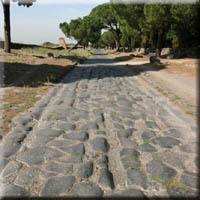 This is an opportunity for one of the most notable visits outside the walls of Rome, with the Appian Way Archaeological Park running along this Roman road for many kilometers, the main catacombs of the city, and several remarkable adjacent parks. Between the large avenues of Tuscolana and Appia Nuova, it is a modern district urbanized during the 20th century, where the important Cinecittà studios were established.
This is an opportunity for one of the most notable visits outside the walls of Rome, with the Appian Way Archaeological Park running along this Roman road for many kilometers, the main catacombs of the city, and several remarkable adjacent parks. Between the large avenues of Tuscolana and Appia Nuova, it is a modern district urbanized during the 20th century, where the important Cinecittà studios were established.
Pigneto and Prenestino
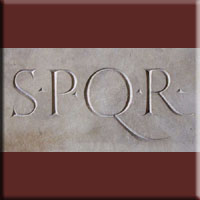 The Via Prenestina leads away from Rome through Porta Maggiore, first passing through the Pigneto district, which has been one of the liveliest parts of the city for at least two decades, with associations, artists, bars, and a rich nightlife. Further on are mainly residential and working-class neighborhoods of Prenestino and Centocelle, developed during the 20th century.
The Via Prenestina leads away from Rome through Porta Maggiore, first passing through the Pigneto district, which has been one of the liveliest parts of the city for at least two decades, with associations, artists, bars, and a rich nightlife. Further on are mainly residential and working-class neighborhoods of Prenestino and Centocelle, developed during the 20th century.
San Lorenzo and Tiburtino
 Just beyond the Aurelian Walls near Termini station, San Lorenzo is a district of popular culture and historically antifascist, now a student area with the seat of La Sapienza University, lively in the evening with many bars and clubs. It also contains the very old basilica of Saint Lawrence Outside the Walls and the monumental cemetery of Vomero.
Just beyond the Aurelian Walls near Termini station, San Lorenzo is a district of popular culture and historically antifascist, now a student area with the seat of La Sapienza University, lively in the evening with many bars and clubs. It also contains the very old basilica of Saint Lawrence Outside the Walls and the monumental cemetery of Vomero.
Nomentana and Salaria
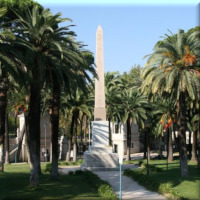 To the northeast of the city, Via Salaria and Via Nomentana were important Roman routes that today cross residential neighborhoods, including the fanciful Art Nouveau urban complex of Coppedè. The Salaria borders the south of the large public park of Villa Ada, passes by the catacombs of Priscilla, and reaches the Aniene river. Along the Nomentana, one can also visit the Villa Torlonia and the complex of Saint Agnes.
To the northeast of the city, Via Salaria and Via Nomentana were important Roman routes that today cross residential neighborhoods, including the fanciful Art Nouveau urban complex of Coppedè. The Salaria borders the south of the large public park of Villa Ada, passes by the catacombs of Priscilla, and reaches the Aniene river. Along the Nomentana, one can also visit the Villa Torlonia and the complex of Saint Agnes.
Flaminio, Olimpico, Parioli
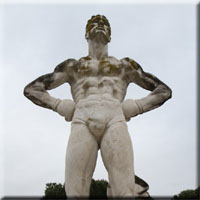 Heading north of Rome from Porta del Popolo, Via Flaminia runs along the Tiber and crosses neighborhoods built mostly during the 20th century: Flaminio to the west, with several museums and former industries, Pinciano and Parioli to the east with multiple embassies, the park of Villa Borghese, an Olympic village, and the Auditorium.
Heading north of Rome from Porta del Popolo, Via Flaminia runs along the Tiber and crosses neighborhoods built mostly during the 20th century: Flaminio to the west, with several museums and former industries, Pinciano and Parioli to the east with multiple embassies, the park of Villa Borghese, an Olympic village, and the Auditorium.
Della Vittoria, Trionfale and Montemario
 Between the hill of Montemario to the west with its panorama and nature reserve, and the Tiber to the east, the plain of the Della Vittoria district (formerly called Milvio) mixes institutions and residences, with to the north the sports facilities of the Foro Italico, including the football stadium and others, some dating back to the fascist era.
Between the hill of Montemario to the west with its panorama and nature reserve, and the Tiber to the east, the plain of the Della Vittoria district (formerly called Milvio) mixes institutions and residences, with to the north the sports facilities of the Foro Italico, including the football stadium and others, some dating back to the fascist era.
Monteverde, Portuense and Aurelia
 On the Janiculum hill west of Trastevere, the Aurelian Walls were crossed by the Via Aurelia. It is now an elegant district of Monteverde Alto near the large public park of Villa Pamphilj. Below, lower Monteverde (or Gianicolense) and along Via Portuense are livelier and more popular.
On the Janiculum hill west of Trastevere, the Aurelian Walls were crossed by the Via Aurelia. It is now an elegant district of Monteverde Alto near the large public park of Villa Pamphilj. Below, lower Monteverde (or Gianicolense) and along Via Portuense are livelier and more popular.
Ostiense, Ardeatino, EUR and Garbatella
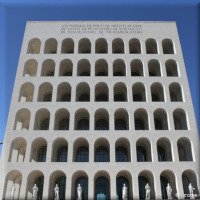 To the south of Rome, the Roman road led to the port of Ostia on the coast. It now crosses former industrial neighborhoods, passes by the major basilica of Saint Paul Outside the Walls and near the pleasant residential area of Garbatella, before reaching further on the E.U.R., a large urban area planned rationally during the fascist period with notable buildings and museums.
To the south of Rome, the Roman road led to the port of Ostia on the coast. It now crosses former industrial neighborhoods, passes by the major basilica of Saint Paul Outside the Walls and near the pleasant residential area of Garbatella, before reaching further on the E.U.R., a large urban area planned rationally during the fascist period with notable buildings and museums.



